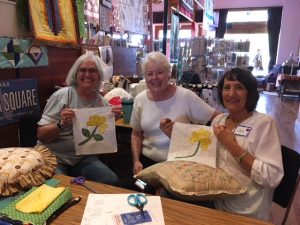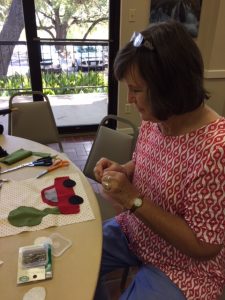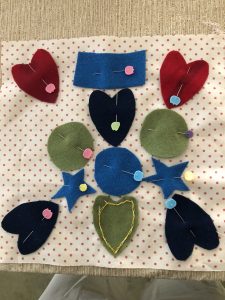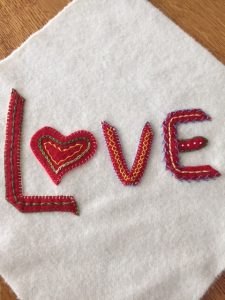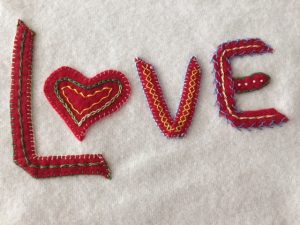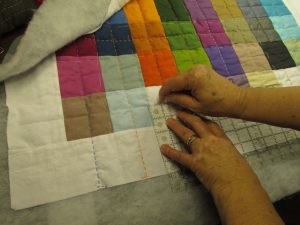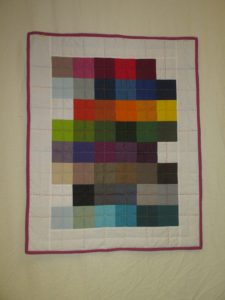By Judy Moore Pullen
Yes, there is a difference in hand sewing needles, just like there is a difference between driving a 5-speed standard transmission car or an automatic. When I was younger and my vision was better, my hands steadier, I used whatever needle was easy to thread. Over the years, and after dabbling in many different kinds of sewing projects, I have learned several things about hand sewing needles.
I find that for needle turn applique, I prefer Mary Arden or John James applique needles, size 10. I can thread these needles with Presencia 50 or 60 weight cotton, sometimes needing to use a threader. These needles are so sharp that they pierce, rather than push the fabric, making my applique more accurate, my stitches smaller and more consistent. They also glide easily through the fabric, rather than distorting it. The shafts of these needles are smooth and strong. They do not bend and help prevent my hands and fingers from cramping.
A friend who does beautiful hand applique prefers using betweens, generally thought of as hand quilting needles. These work well for her. For me and my chubby fingers, I need a longer needle, hence applique needles. Another good choice for hand applique is milliners needles, which are longer still. Sometimes I switch to a milliners needle after extended sessions of hand stitching. This is somewhat like changing your shoes to a different heel height during the day – it gives you a rest.
Another passion of mine is wool applique by hand. My needles of choice are John James chenille and tapestry needles. They come in sizes 18-26. The bigger the number, the finer, smaller the needle. Somewhat like us – the bigger our number/age, the finer we are, right? That is my story, and it helps me remember. This applies to hand sewing needles and thread sizes. John James chenille needles are sharp and easily pierce wool. The eye is elongated for ease of threading perle cotton or several strands of floss. The larger shaft opens the fibers of wool, allowing the thread to be drawn through, then the opening closes around the thread.
If you tap, tap, tapped a chenille needle on a hard surface, over time, the tip would become dull, and this helps me remember that a tapestry needle serves well for needlepoint and wrap embroidery stitches when you do want a blunt needle, and do not want to separate fibers of your background or embroidery threads. I can easily thread a John James tapestry needle with contrasting colors of Presencia Perle Cotton or Floss and create fun and unique designs by wrapping previously stitched threads.
I must also add a note about Needle Grip-its. These tiny adhesive circles have enabled me to stitch for hours without hand pain. The repetitive motion of gripping and pulling a needle can cause hand and finger pain. You do not notice it right away, but over time, it can become a problem. I want to continue happily hand stitching, and these little sticky dots are inexpensive, unobtrusive, and what I consider a necessary “tool”.
Happy Stitching!
Judy



